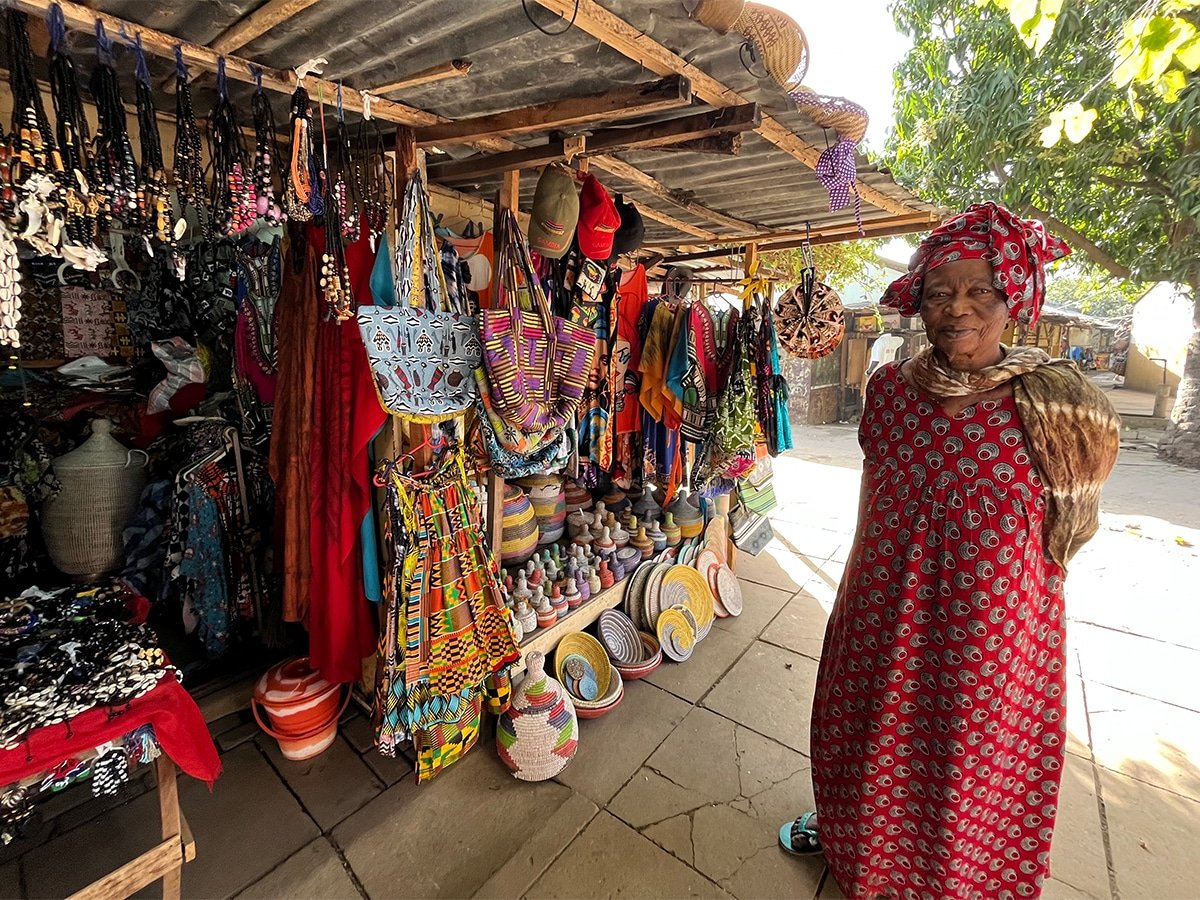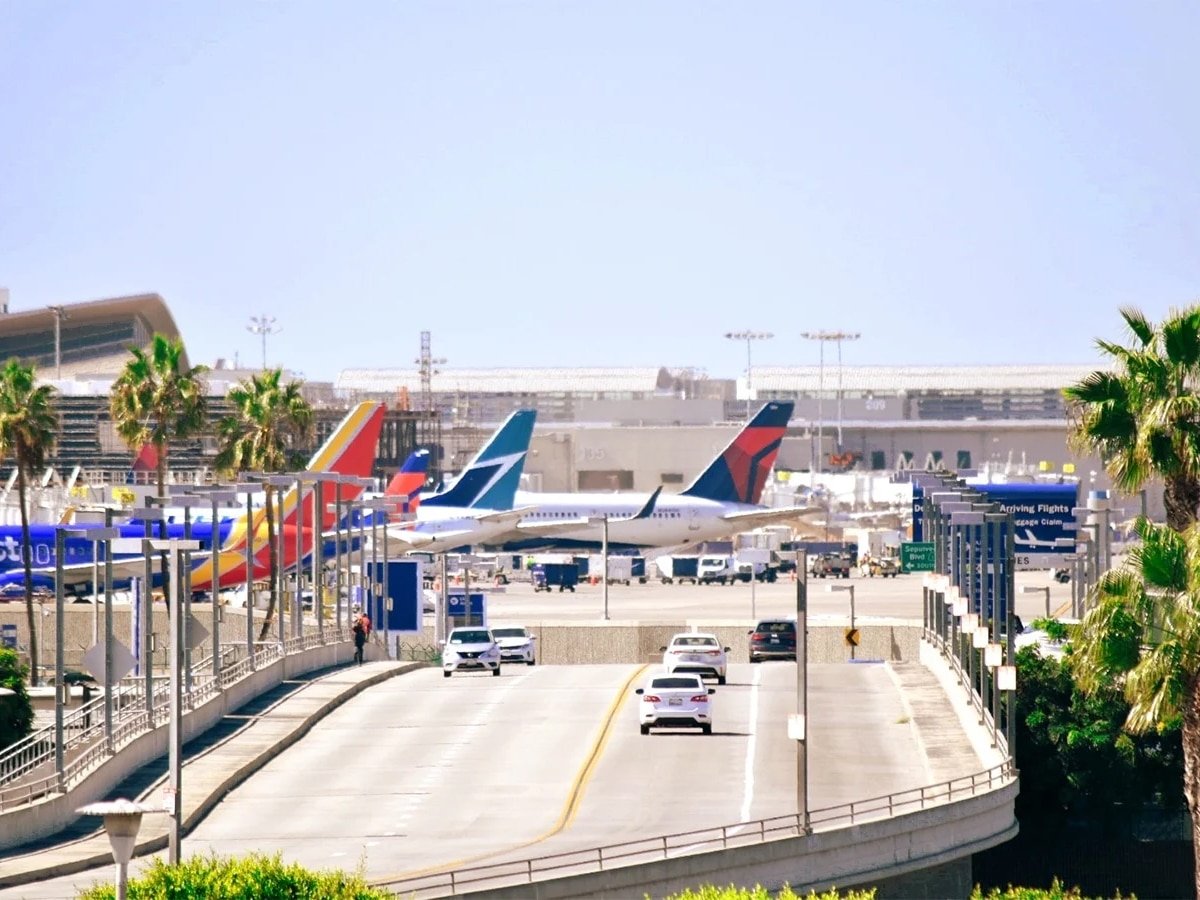My thanks to Variety Cruises for hosting this trip so I could write this detailed review of my experience.
It’s late afternoon in the dusty market town of Kuntaur on the Gambia River as I disembark from my small cruise ship. The townspeople swarm our tiny group of visitors, a rarity in these remote parts, while children latch onto our hands as if to signal, “this one is mine.” After a short stroll through town, we return to shore to witness a spirited dance and drumming presentation, kicked off by a leaf-covered masked shaman, who blesses the event. Before I know it, a tall, lithe local woman with an exuberant smile grabs my hand and pulls me into the dance circle, as the drummers pound out a pulsing rhythm. I laugh and follow along, becoming part of this joyous cultural celebration.

It’s just one of many such pinch-me moments on my a seven-night sailing aboard the 44-passenger Harmony G along the coasts of Senegal and The Gambia and up the Gambia River. Called “West African River Cruises: Dakar to Dakar,” this itinerary from Variety Cruises is the only one offered by any cruise line on this distant river. As such, it appeals to veteran cruisers or “country collectors” in search of new destinations.
Two tiny countries, formerly French Senegal and formerly British Gambia are located in the “bulge” of West Africa in the westernmost part of the African continent. Surrounded by Senegal on three sides, The Gambia is named for its river, which meanders horizontally through Senegal and The Gambia — the smallest nation on mainland Africa — before pouring into the Atlantic Ocean.
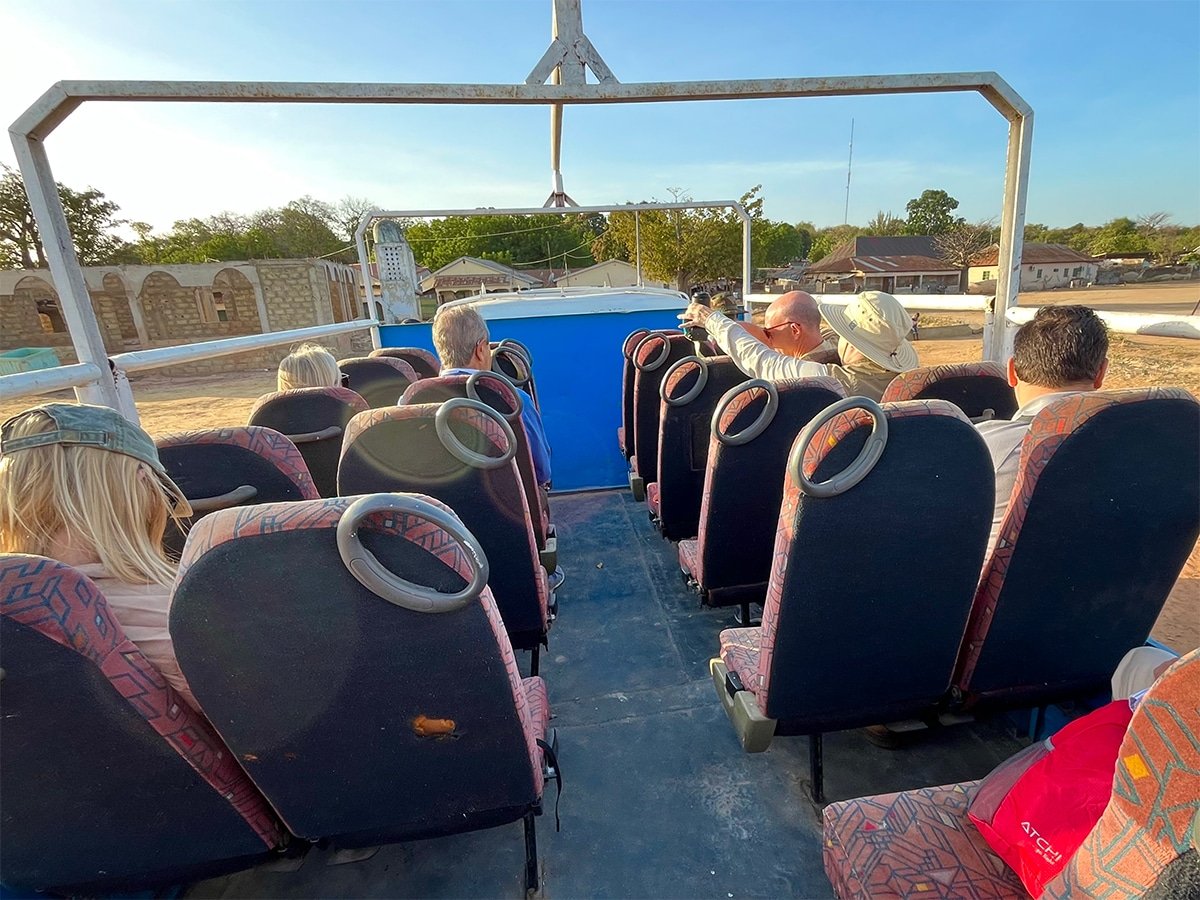
Starting from Senegal’s capital Dakar, this trip is the very definition of slow travel as it moseys south along the coast to The Gambia’s sleepy capital Banjul and then eastward along the lazy river. It’s a journey meant for rugged adventurers not daunted by hot dirty towns, rough-hewn motorized canoes and rustic open-air safari vehicles. Although the ship itself is very comfortable, the journey is not for the creature-comfort set. “It’s not for anyone who is not a seasoned traveler and in good physical condition because it’s challenging,” observes Marcia Dillon, a fellow passenger who’s a travel agent from Scottsdale. But bring your sense of adventure and exploration and you’ll be rewarded with an unvarnished, authentic experience in a part of Africa rarely seen by outsiders.
From wonderful wildlife to fascinating history and culture, here are highlights of our unusual journey.
The Atlantic slave trade
Turns out that this itinerary follows the path of the largest slave trade through West Africa, which traveled along the Gambia River from the interior to the sea. I start out with an emotional visit to tiny landmark Gorée Island, just off the coast of Dakar. This UNESCO World Heritage Center was the largest slave-trading facility on the African continent from the 15th to the 19th century. As I crouch inside the claustrophobic solitary confinement room and stare at the “door of no return” (where enslaved people were loaded onto ships bound for the Americas), my Senegalese guide says,” this represents one of the most shameful periods of human history.”
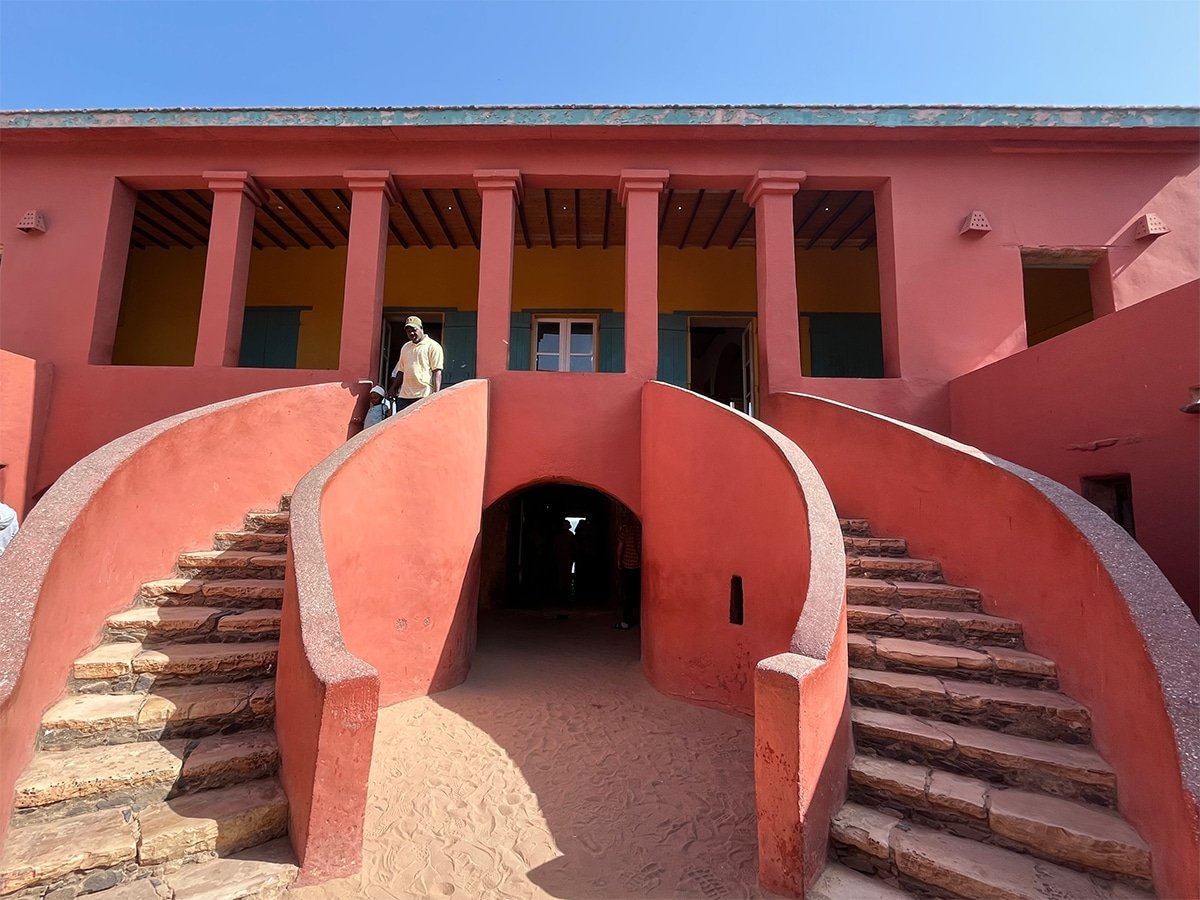
In the Gambia River town of Janjanbureh, the slave trading theme continues. Here, we visit another former slave-holding facility with grim underground dungeons, as well as the Freedom Tree, which runaway slaves could touch to obtain their freedom. And finally, we end up at tiny Kunta Kinteh Island in the mouth of the Gambia River. A UNESCO World Heritage Site, it’s named for a character in Alex Haley’s seminal work, Roots, who came from this area in the mid 18th century. Although the island’s been abandoned and has suffered heavy erosion, it once held enslaved people bound for river transport to the sea — a painful symbol of the early slave trade.

Birds and chimps and crocodiles, oh my!
Wildlife lovers — especially birders — will thrill at the chance to get up close and personal with local species, even though they’re not the splashier big game found elsewhere in Africa. In Banjul, I pet a sleeping crocodile, one of 100 of the fearsome creatures roaming free at the Kachikally Crocodile Pool & Museum in Banjul, where I learn that crocs can move 19 miles an hour and live to 100. As we leave Banjul, we spot three dolphins putting on a lively show alongside our boat. In Kiang West National Park, we trek through the dry grassy bush and spy glossy starlings, Abyssinian rollers and hamerkop in the trees, as well as warthogs loitering on the marsh.
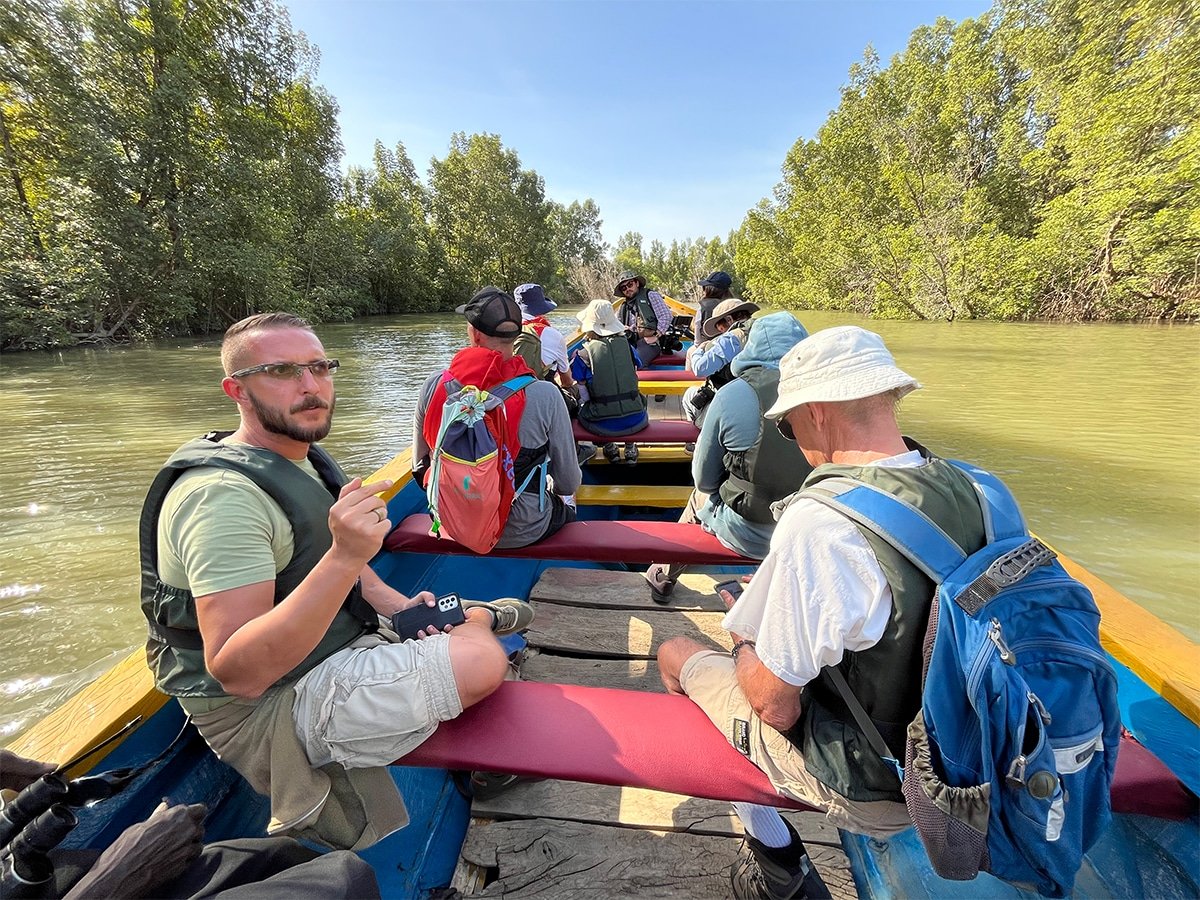
In the afternoon, we board pirogue motorboats, a staple of marine transportation in West Africa, to cruise the mirror-smooth creeks and mangroves of the Bao Bolong Wetland Reserve, where birders can add the 15 species we saw to their life lists. Not to mention, two types of crocs lounging on the shore.
Another pirogue trip in The Gambia National Park takes us to the shores of Baboon Island, home of the Chimpanzee Rehabilitation Project, reachable only by boats small enough to navigate these shallow waters. Here, we delight in watching some of the 146 chimps scampering through the dense foliage, as well as hippos occasionally popping out of the water.

Cultural experiences abound
Cultural experiences vie with Mother Nature throughout our journey. They include: A visit to a batik studio that produces beautifully patterned fabrics. A foray into Banjul’s Albert Market, where we bargain with local craftspeople. An illuminating stop at the Banjul Museum, whose historical displays range from the British royals to female circumcision ceremonies, now outlawed nationally. Each day, our Gambian guide, Kalipha Manneh, shares fascinating insights into his country’s history, culture and tribal ways. For example, “Food in a residential compound is shared communally,” he tells us. “Anyone can walk into a compound have a meal without an invitation.”

Far “upcountry,” we puzzle over the mysterious Wassu stone circles, another UNESCO World Heritage Site. Part of an extraordinary concentration of more than 1,000 stone circles and numerous burial mounds in this area, the site is 1,500 years old. Who knew Africa had stone circles to rival Stonehenge?
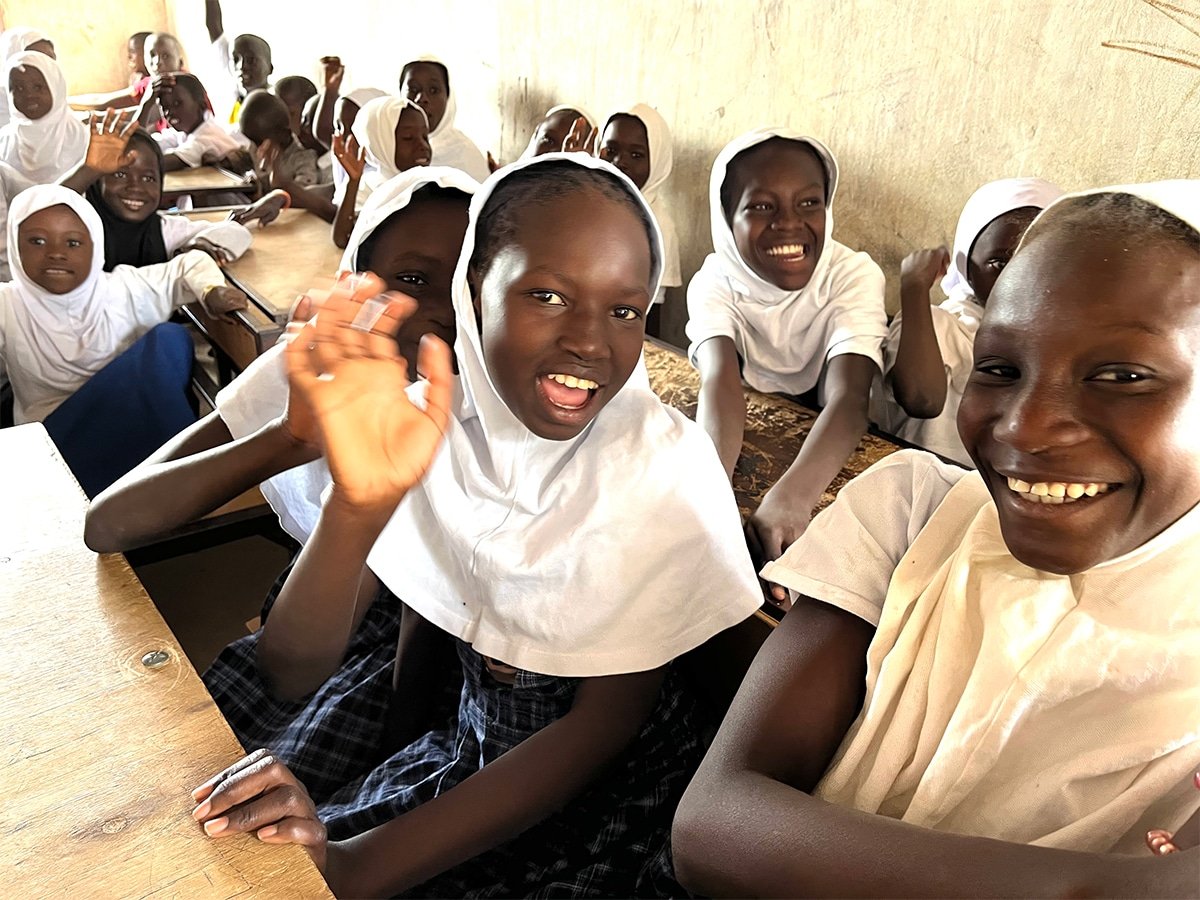
We have a heart-warming visit to a small school in Lamin Koto built with the help of Variety Cruises. The 38 students greet us warmly with a song and each of us donates school supplies we’ve brought from home. Just like this school encounter, every town we visit becomes a precious opportunity to engage personally with the local community and see real village life.
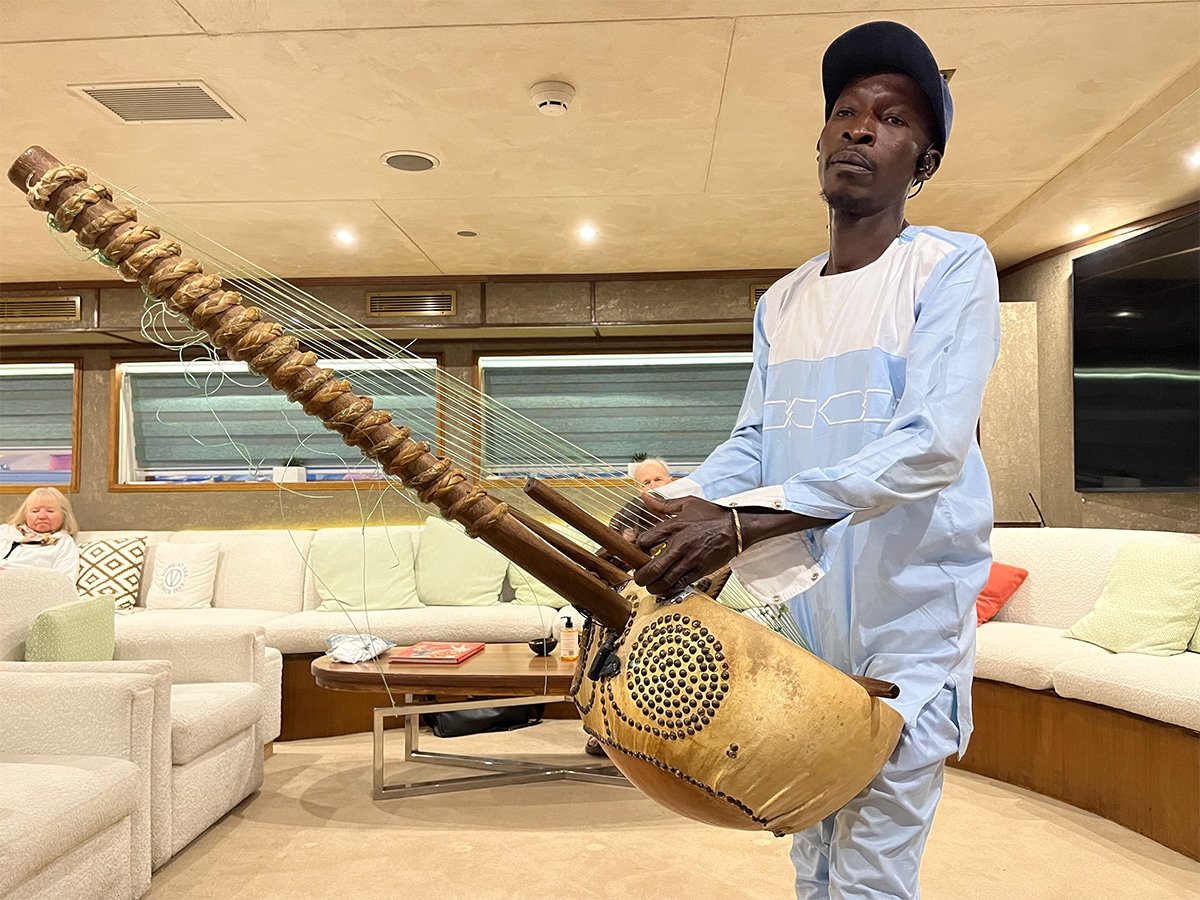
Our last night on the river, we’re treated to an onboard performance by a local kora player, who teases haunting sounds from a 21-string traditional harp-lute made of cowhide, wood and a calabash base. Kora players are considered the griots, or storytellers, of their community charged with sharing its oral history in songs accompanied by this instrumental music that’s unique to West Africa.

Life onboard
Small and spare, Harmony G is a cozy home away from home. Cabins are pocket-sized and modest, with double beds and rectangular portholes. The shower shares a stall with the toilet, but the bathroom is well-outfitted and shipshape. Forget casinos, pool parties or Broadway shows. Instead, a small outdoor terrace/bar and an indoor lounge, where episodes of the TV series, “Roots,” are shown, serve as the social gathering spots. But we’re an early-to-bed crowd after full days of exploring.

Meals are tasty and served mostly buffet-style in a dining room with communal tables. And happily, there are plenty of choices for all preferences and diets. One caveat: WiFi is extremely limited, slow and expensive.
The crew of 19 is warm, friendly and eager to please. After every excursion, we’re welcomed on board with a cool drink and a cold washcloth to refresh ourselves.
The passengers
An eclectic, well-traveled group that hails from the U.S., the U.K., Spain and Canada, the passengers are as varied in background as in their attraction to this cruise. There’s an American anthropologist drawn by the Wassu stone circles, a Canadian lawyer who serves as Senegal’s honorary consul for British Columbia, two American travel agents wanting to get off the beaten path, a British retiree enamored of the book Roots who wants to trace the slave trade route, some are hooked by the wildlife and still others look to add new countries to their repertoire. But each has found the experience extraordinarily rich and rewarding. “I’ve learned a lot and seen a lot,” says Patricia Henderson from London. “It’s for the experience and the culture… an unforgettable adventure to the roots of Africa.”
Want more travel news, tips and deals? Sign up to Johnny Jet’s free newsletter and check out these popular posts: The Travel Gadget Flight Attendants Never Leave Home Without and 12 Ways to Save Money on Baggage Fees. Follow Johnny Jet on MSN, Facebook, Instagram, Pinterest, and YouTube for all of my travel posts.



